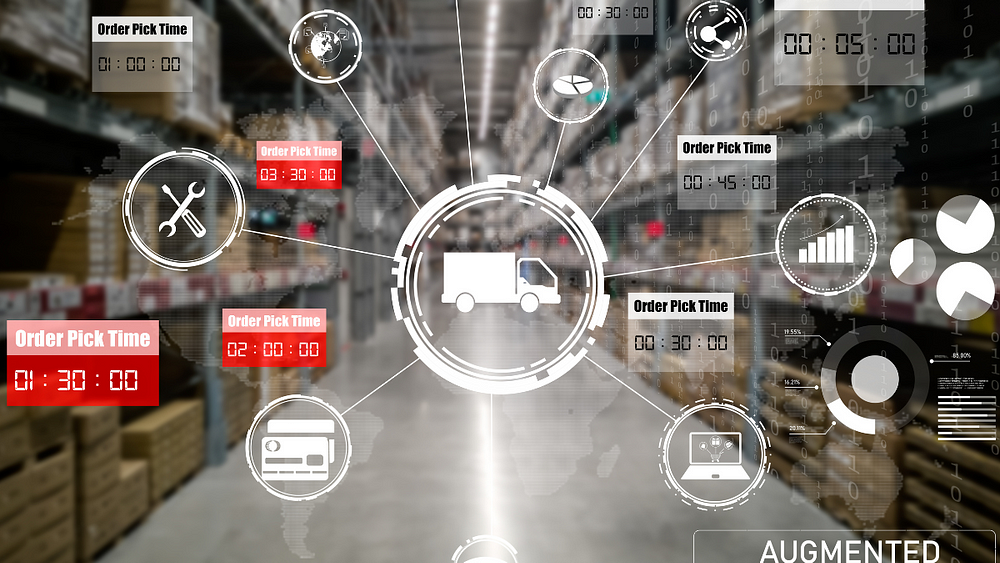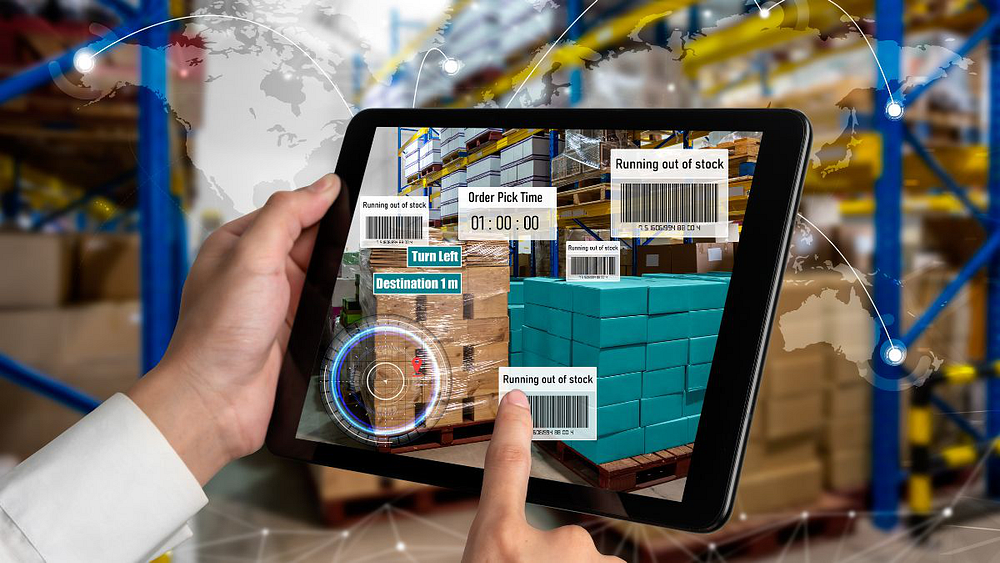
Augmented reality has many uses in different fields, and warehouse management and logistics are no exception. Augmented reality (AR) works best when it comes to picking up things. AR-enabled phones and glasses can save time and help people make fewer mistakes. Let’s look at the other ways AR is useful and can be implemented to streamline order picking in warehouses.
'AR solutions will soon be the new standard because they will bring global changes to warehouse operations.' -Austin BreesClick To TweetAugmented Reality in Warehouse
Managers and workers can use augmented reality glasses to go over the warehouse’s layout and determine whether any adjustments or experiments are feasible. This is a great way to get all the necessary information and decide what changes or improvements to make to your inventory. It helps logistics organizations save time, money, and effort during the planning and replanning of warehouses. Think about having a device that bridges the gap between the real world and the world of fiction. The software behind it would analyze the object in your line of sight and show you information about that object.

Augmented reality has a lot of potential because it can completely change how things are done now and make them easier to scale. With the help of a digital 3D warehouse guide, managers and workers can improve their work with the help of a mobile app and AR smart glasses that allow for guided vision. With a warehouse management system (WMS), picking orders and finding supplies wouldn’t require any human help. Automation is important because demand is rising, and customers want their orders as soon as possible. Time is saved, and warehouse efficiency is increased across the board with augmented reality systems that provide a bird’s-eye view of all logistics and distribution hubs.
AR Use Cases in Warehouses

Several things can cause picking problems, such as the size of your warehouse and how much vertical space it has, whether or not you use automated storage and retrieval systems (AS/RS), how many people you have on your staff, and how much work experience they have. When choosing the functionality pack for your augmented reality software, focus on the features that solve the most pressing problems you’re facing right now. When you see the benefits of AR-supported item picking for yourself, you’ll be able to add more functionality and new features.
#1: Navigation
This is an essential amenity in warehouses with a square footage of more than 90,000 square feet, as workers will need to use warehouse trucks to get around quickly. Medium-sized warehouses may also want to add this feature because it helps trainees who are not used to the warehouse layout get right to work.
First, an employee opens a list of items to choose from using smart glasses or a smartphone. With the WMS built right into the software, they can get the list uploaded and ready to go in under a minute. The software then looks at the list and reads the most up-to-date information about the warehouse layout to figure out the easiest and fastest way to get all the items. Once the route is made, the app tells you how to get from one place to the next. The instructions show up as a virtual layer on the glasses or phone screen. This adds to the reality that the camera lens is capturing. You can also add a voice-over that tells you how to use the basic controls.
#2: Locating an Item
This feature is the next logical step if you add navigation to your AR app’s functionality pack. When an employee gets to the right place, the app finds the item automatically by pointing at it. If your warehouse is smaller than 30,000 square feet and no navigational directions are needed, this function can also serve as the initial stage in the picking process. This functionality, however, must first include the option to import a product catalog from internal systems.
Augmented reality software looks at the item code group in the list and compares it to the exact layout of your warehouse and how items are usually placed in it. Then, when an employee uses the device to scan the area, the app shows where the items in the requested code group are. Once an employee picks up an item, the app can check it by reading the barcode, eliminating the chance of mistakes.
#3: Reading a Barcode
If your warehouse already has an electronic system for reading barcodes, you can choose to connect it to the AR/VR apps. This will allow barcode readers to send data to the app automatically. AR apps can read barcodes if you do not have a similar system or want to use your device as little as possible. With the right software, a simple smartphone can easily replace any barcode reader.
Before turning on the app’s barcode reading mode, a warehouse worker can choose between two scanning modes: checking in and picking. When you check in, every item you scan is automatically added to WMS. If an item is marked for picking, the app shows details about it and checks them against the database entry. This type of automatic picking verification saves time and reduces the number of picking errors.
#4: Synchronization
After the AR app has scanned an item’s barcode, it talks to the integrated systems and gets all the item’s information. As a result, all the info (product details, client profiles, delivery instructions, etc.) is flawless. The feature could be useful for checking item picks, warehouse audits, and getting orders ready for shipping docks.
The New Standard
AR solutions will soon be the new standard because they will bring global changes to the industry. New technologies like artificial intelligence and big data are important for warehouse operations. As companies become more aware of their workflows and work to improve them, the products will get better and become more popular on the market.
Tweet
Share
Share
- Artificial Intelligence
- Augmented Reality
- Automation
- Digital Transformation
- Industrial Automation
- Artificial Intelligence
- Augmented Reality
- Automation
- Digital Transformation
- Industrial Automation
